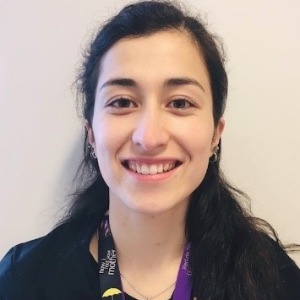Title : Feasibility of an Augmented Reality (AR) novel approach for the rehabilitation of Chronic Low Back Pain (CLBP) patients with kinesiophobia
Abstract:
Introduction: Chronic Low Back Pain (CLBP) is a prevalent and disabling condition often associated with kinesophobia, which can perpetuate pain and functional limitations. Current virtual reality-based rehabilitation tools show promise but are frequently inaccessible and fail to directly address fear-avoidance behaviors.
Objective: To evaluate de feasibility a novel approach that combines Augmented Reality (AR) and computer vision algorithms for the rehabilitation of patients suffering from CLBP and kinesiophobia.
Methods: This proof-of-concept study employed an iterative development and testing approach within a mixed-methods design, involving participants with chronic low back pain (CLBP). The study was conducted in a controlled research setting, where all assessments and interventions were carried out in person using a mobile augmented reality (AR) technology called AnReal. AnReal consists of a mobile application that integrates artificial intelligence to merge AR and virtual reality (VR). The application was specifically designed to support rehabilitation exercises, particularly targeting forward bending movements—a common difficulty among individuals with CLBP. AnReal provides visual feedback by displaying a video that simulates the continuation of the bending motion, ultimately showing the patient’s feet. This creates the illusion of completing the movement, thereby reducing fear of motion through a visual feedback loop. Participants were adults over 18 years of age, diagnosed with non-specific CLBP, with less than 40 degrees of spinal forward flexion. They performed lumbar flexion exercises guided by the AnReal system. Baseline characteristics collected included age, sex, medical history, and physical activity levels. Clinical assessments included the Visual Analog Scale (VAS), Roland-Morris Disability Questionnaire, and the Tampa Scale of Kinesiophobia. Primary outcomes included the Simulator Sickness Questionnaire (SSQ), range of motion (ROM) measurements, and qualitative data obtained through semi-structured interviews.
Results: The median age was 59 years (range 19–63), and 50% of the patients were female. Patient characteristics are shown in Table 1. The median pain score on the VAS was 7.8 (range 5.2–8), median of Roland Morris Disability Questionnaire was 17 (4-24) and the median kinesiophobia score was 30 points (25–44). Participants feedback on their experience using the technology, reported in cybersickness questionnaire that none of them felt fatigue, difficulty focusing, increased salivation, nausea, or burping. Symptoms of general discomfort, eye strain, difficulty concentrating, fullness of head, dizzy (with eyes closed), vertigo and stomach awareness, presented only slight symptoms in some patients. Most patients agreed that the transition from vision to video was harmonious and that the video help to do the bending task. Patient #1 reported that the guidance provided by the device, specifically the visual cues encouraging greater bending, motivated them to push further: “Of course, because the machine was telling me to go lower, I was trying harder to go lower.”
Conclusions: This AR-based intervention was safe, well-tolerated, and promising for addressing kinesophobia in CLBP patients. This innovative, low-cost AR tool could offer scalable rehabilitation options targeting fear-related movement avoidance in chronic pain populations.




